Connect With Other Patients And Share Tips On How To Manage Parkinsons Disease In Our Forums
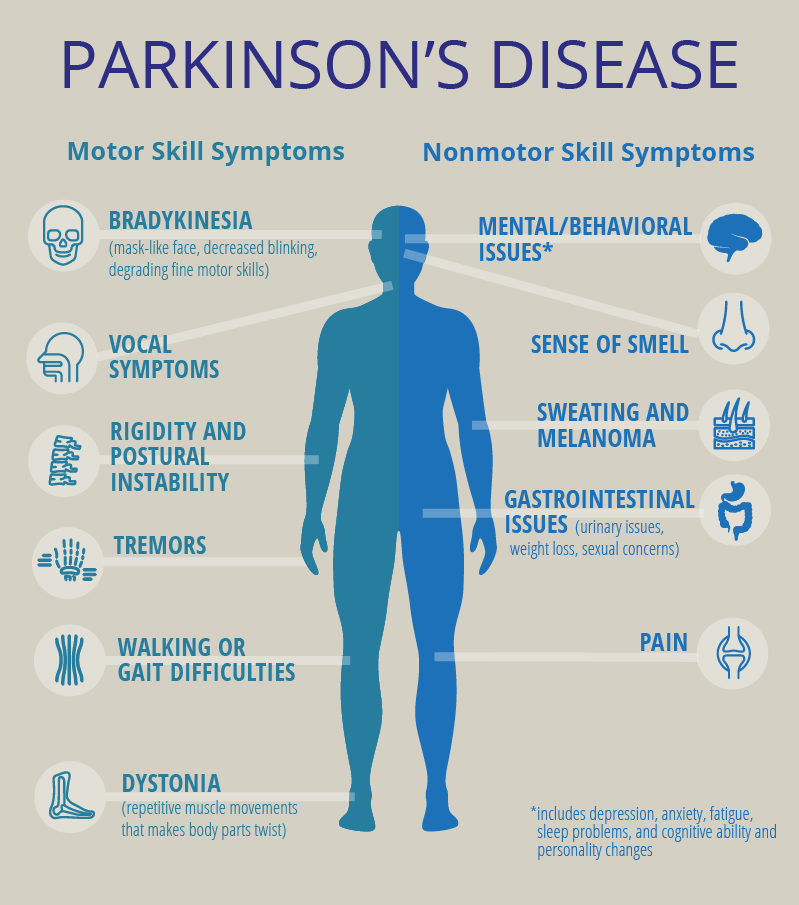
Up to 44 percent of those with PD have experienced internal tremors. This also is what young-onset Parkinson’s disease can look like. In my early 20s, the tremors continued, and I started having gut troubles. I didn’t think much of it, but looking back on my medical history, my doctor felt confident that PD was playing a quiet role way back when.
Fiona MacDonald, of ScienceAlert, says, “Researchers have noticed that people with Parkinson’s often report … digestive problems up to 10 years before they notice tremors. There’s also evidence that people with Parkinson’s disease have different gut bacteria to other healthy adults.” This also is what PD can look like — but you can’t see it.
I began reading through my journals and began to see my symptoms actually did begin in high school. But they were subtle. They were unpronounced, minimal, silent, unassuming. There was some rigidity. Internal tremors. Gut problems. Not much, but enough to put a connection to. This is what young-onset Parkinson’s disease can feel like.
When I was 32, I was misdiagnosed with lupus and medicated with pills that didn’t make a difference. This is not uncommon.
I don’t have time to wallow in a sea of sorrow over a disease I have, but would rather not have. Since I do have it, I recognize there are times when it’s OK to be treated differently and to need help. It’s really OK, because …
… that’s what PD can look like.
***
What We Learned About Parkinsons Disease And Employment At A Recent Apda Conference
I broadened my knowledge of these issues while attending the APDA Parkinson’s Midwest Congress in St. Louis on March 14, a Parkinson’s educational symposium organized by the St. Louis Chapter of APDA. One excellent session was entitled: Young Onset Parkinson’s Disease Panel of Experts Discussing Disclosure of Diagnosis, Job Accommodations, Assistive Technology, and Disability. The three experts who presented were a social worker with expertise in the PD community, Terri Hosto, an employment lawyer, Janine M. Martin, and an occupational therapist with a focus on helping people with disabilities navigate the workplace, Debbie Turley.
Here are some of the pearls that I learned during the session that you may find helpful. And read on for some personal scenarios based on real patient stories to learn how some people with PD navigate this part of their lives.
Circumstances And Societal Engagement In Yopd And Implications For Management
In general, people with YOPD tend to have different family and societal engagements to those with late-onset PD. For example, most people diagnosed with YOPD will have a job, whereas some people with late-onset PD have already retired. Additionaly, it is not unusual that people with YOPD have young children , or may want to start a family.
Thousands Of Prince George’s Kids Need Required Vaccines For School: Official
Other neuroprotective agents include coenzyme Q10. While there is a small study suggesting some modest benefit from high doses of coenzyme Q10, the effect was seen only at 1,200 milligrams a day.
Finally, exercise is probably the most effective neuroprotective treatment. There was a study showing that exercise in young men was associated with a lower lifetime risk of Parkinson’s disease. Experts know that neurons are produced throughout your lifespan and exercise is one of the things that seems to stimulate their growth. “It’s also my personal experience, that the patients who exercise regularly and vigorously are better off in terms of their motor and mental symptoms,” says Griffith.
What treatments are available to control the symptoms of Parkinson’s disease? All patients with Parkinson’s disease will eventually require levodopa for control of their symptoms. It really is the gold standard for treatment of Parkinson’s disease.
Older patients are more likely to start with levodopa, and younger patients are more likely to start with the dopamine agonists. The most common dopamine agonists used in this country include Mirapex and Requip . Starting an early-onset patient on these medications is associated with a lower incidence of motor complications.
#4 Make An Appointment With A Physical Therapist Or Occupational Therapist
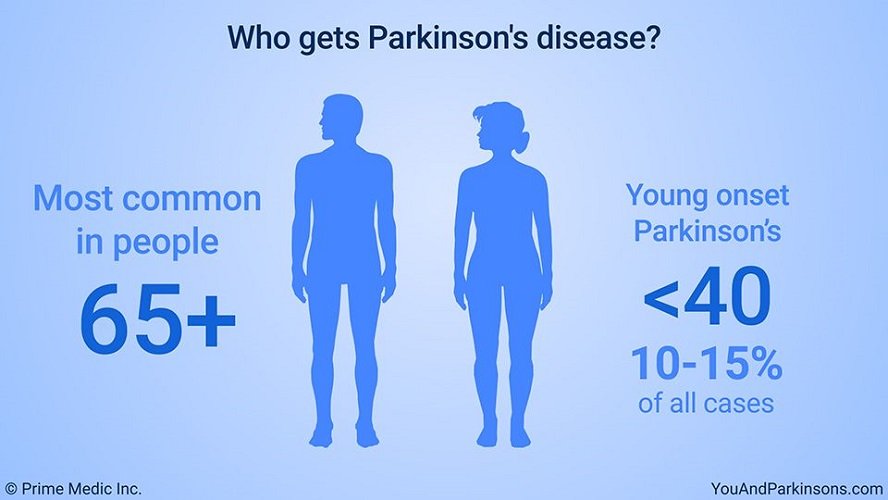
- One of the most common phrases we hear from people with Parkinson’s is, “I wish I had seen a physical therapist sooner.” Doing your daily exercise program isn’t enough. Physical therapists and occupational therapists create individualized exercises that meet your specific needs. The activities they recommend can improve your posture, gait, arm swing, and other movement challenges.
What Is The Prognosis And Life Expectancy For Parkinson’s Disease
The severity of Parkinson’s disease symptoms and signs vary greatly from person to peson, and it is not possible to predict how quickly the disease will progress. Parkinson’s disease itself is not a fatal disease, and the average life expectancy is similar to that of people without the disease. Secondary complications, such as pneumonia, falling-related injuries, and choking can lead to death. Many treatment options can reduce some of the symptoms and prolong the quality of life.
How Similar Is Canine Parkinsons Disease To The Human Condition
Parkinson’s disease in dogs is very similar to how it affects humans.
Firstly, both unpredictably affect your movement. Both dogs and humans with this disease can expect to have sudden moments of stiffness. This could be any limb but also the face.
Equally, both can expect surprise tremors and shakes. This is often one of the first things owners notice in their dogs; a Parkinson like tremor in dogs or the dog shaking his head like Parkinson’s
The core of the disease is the same in both dogs and humans.
However, it is important to recognize the different ways Parkinson’s presents in dogs and humans.
A huge reason why Parkinson’s disease is difficult to spot in dogs in the early stages is because they don’t speak. Their faces also don’t express the same ways that ours do.
The first signs of Parkinson’s in humans are mostly not being able to move the face in the same way or slurred speech.
Unless you have a real-life Scooby-Doo in your life that is linguistically gifted, it’s most likely you won’t spot the signs of Parkinson’s in your dog until their limbs are affected with those Parkinson’s tremors I mentioned a moment ago.
Another critical difference is with the age groups that Parkinson’s most affects. As I said in the intro, it is usually the over 50’s that are affected by this pervasive disease in the human world.
Other Diseases That Have Similar Symptoms To Parkinsons Disease
Now, I just want to address something you may have noticed here. Many of these symptoms and signs could also apply to other diseases. Is it an overreaction to assume that if your dog twitches a bit it is definitely Parkinson’s disease?
Well… yes and no. Certainly, all of these symptoms could indicate other ailments.
Let’s go through a few now:
- Generalized tremor syndrome: Yep, it’s a thing! Your dog may tremor for no real reason. This doesn’t have the same stiffness and limited joint mobility that Parkinson’s does.
- Kidney disease: Kidney disease can cause depression, anxiety, and tremoring. You’ll most likely see vomiting and infrequent urination come with this and can lead to euthanasia.
- Arthritis: A friend of mine has an arthritic dog and stiffness is a real problem. Having inflexible joints can also cause your dog to limp. Arthritis is differentiated by joint pain so your dog may be more vocal if this is what they are suffering.
- Seizure disorders: Did you know that dogs can suffer from epilepsy? Seizures can be caused by all kinds of things. They can also be the entire ailment all by themselves.
As you can see, the signs of Parkinson’s in dogs could belong to an entirely different diagnosis. So, if you notice stiffness or tremoring, it is best to have your professional veterinarian make a formal diagnosis.
Young Onset Parkinson’s: A Conversation Of Our Unique Needs
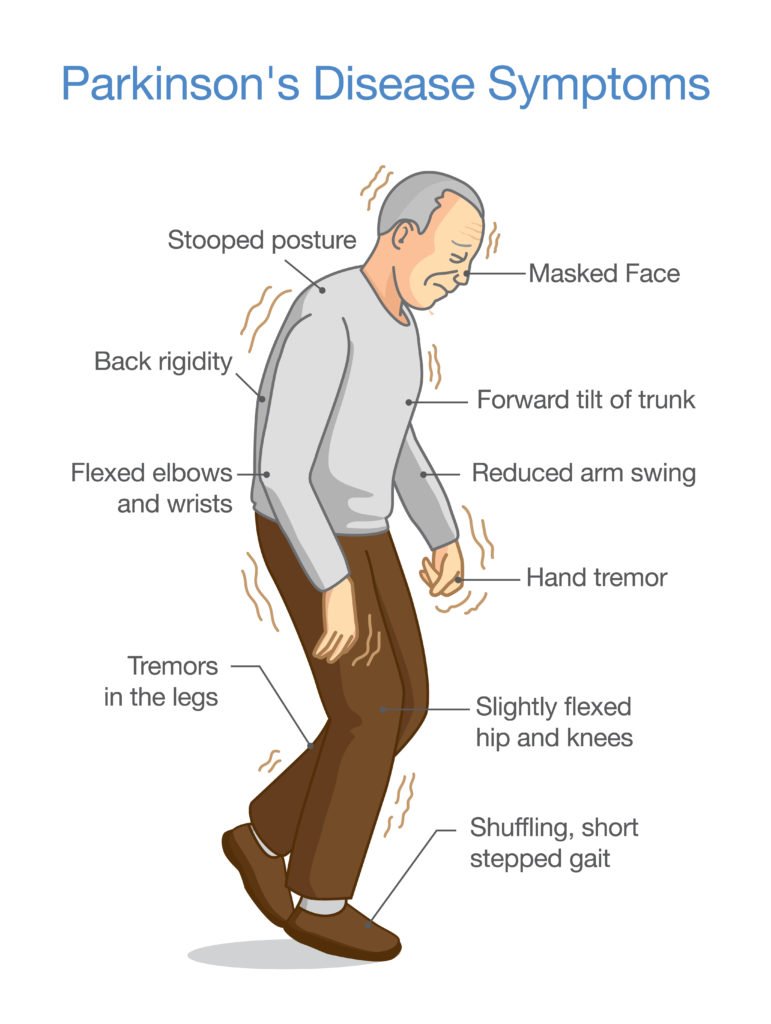
In this one-hour video, a panel of people with Young Onset Parkinson’s Disease discuss the challenges faced by those with YOPD. The panel features Larry Gifford, famous for his podcast “When Life Gives You Parkinson’s,” Dr. Soania Mathur, a member of Parkinson Canada’s Medical Advosory Council, Tim Hague, who won the first Amazing Race in Canada after being diagnosed, and Omotola Thomas, founder of ParkinStand.
Should You Put Your Dog Down If Their Parkinsons Is Bad
I cannot answer that question for you. Your decision to euthanize a dog with Parkinson’s disease is highly personal. If your dog’s quality of life is truly poor, with no independence at all, the kinder thing may be to put them down.
It’s a decision we never want to make, but sometimes it really is the best thing for them.
Consult your veterinarian for advice on how long your dog can expect to remain mobile and when euthanasia may be the sole solution.
Treatment Options For Early Onset Parkinsons Disease
Parkinson’s treatment aims to slow the disease’s progression. Medication treatment options may include the following:
- Levodopa is a chemical that’s converted to dopamine in the brain. People with early onset Parkinson’s may experience more negative side effects, such as involuntary movements.
- MAO-B inhibitors can help reduce the breakdown of dopamine in the brain.
- Catechol-O-methyltransferase inhibitors can help extend Levodopa’s effects on the brain.
- Anticholinergics can help reduce tremors.
- Amantadine may be used to improve muscle control and relieve stiffness.
Can Dogs Get Parkinsons Disease + What Are The Signs Pin
Parkinson’s is an unfortunate part of many people’s lives. On average, 60,000 Americans are diagnosed with Parkinson’s disease every year. As people get older, they become more susceptible to neurological disease. But did you know that dogs can also suffer with neurological disorders?
Can dogs get Parkinson’s disease? Just like humans, dogs can get Parkinson’s disease. Whilst canine Parkinson’s is similar to the human disease in many ways, there are difference in the ways in which Parkinson’s disease affects dogs.
Genetics In Yopd And Its Implications For Management
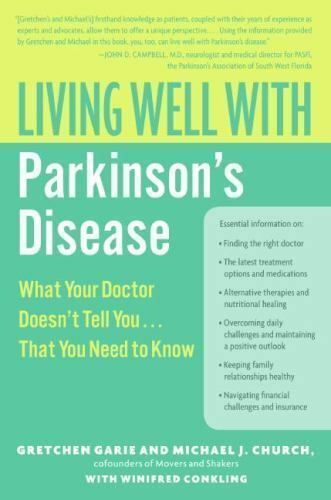
The genetic background of PD is gradually being revealed and consists of the spectrum from common variants that have small contributions to an increased vulnerability, to true monogenic forms . Some of the genes that previously received a PARK locus symbol are in fact unconfirmed, are risk alleles, or— if mutated— give rise to a more complex phenotype. A new nomenclature of genetic movement disorders, including PD, was recently proposed and has tried to deal with these complexities . Here, we focus on the confirmed genes that can be considered monogenic forms of PD. These mainly include the dominant genes SNCA, LRRK2, GBA, and VPS35, and the recessive genes Parkin, PINK1, DJ1. The common picture from the literature is that PD patients with a mutation in one of these genes present at an earlier age, particularly for the recessive genes and SNCA . So, vice versa, if a PD patient presents at a young age, the option of a genetic etiology is often considered. While next generation sequencing platforms have simplified screening the relevant genes, we have to critically address the question: what is the actual benefit of genetic testing in YOPD?
Tips For Caring For Someone With Parkinsons Disease
Caring for a loved one with early onset Parkinson’s can be difficult. If you’re a caregiver for someone with this condition, it’s important that you remember your own emotional and physical health.
Not only are you dealing with a difficult diagnosis, you’re also managing an increased number of responsibilities. Burnout is common in caregivers, so make sure you’re checking in with your own needs.
The Michael J. Fox Foundation Center for Parkinson’s Research recommends these tips for caregivers:
The Impact Of Parkinsons Disease On Overall Health
Based on the Blue Cross Blue Shield Health Index, the overall health of those affected by Parkinson’s is significantly lower than the general population. In 2017, the average BCBS Health Index for someone aged 30-64 with Parkinson’s was 57, compared to 88 for the entire commercially insured population in this age range. This translates to an average of 10.7 years of healthy life lost for those with the condition compared to 3.4 years for the 30-64 population as a whole.4
Caring for someone with Parkinson’s Disease
The majority of Parkinson’s patients are cared for by informal caregivers, such as a family member. The physical, mental and emotional work this requires can be significant. The Impact of Caregiving on Mental and Physical Health found that caregivers have 26% poorer health compared to a benchmark population, as measured by the BCBS Health Index. In addition, a national survey conducted by the Blue Cross Blue Shield Association found that 1 in 4 unpaid caregivers are feeling more stress trying to balance work and family due to COVID-19.5
Making A Diagnosis For Canine Parkinsons Disease
You’ll need to be diligent about recording your dog’s symptoms. Your vet will definitely be relying on your reports to see if their diagnosis is accurate. They will also test your dog’s motor function by having them do certain physical exercises.
They may also have full blood work and x-ray scans done to rule out any other potential ailments.
Your vet may encourage that you get a second opinion too. Neurological diseases in dogs are somewhat difficult to diagnose.
Young Onset Vs Late Onset Parkinson’s Disease

Claudia Chaves, MD, is board-certified in cerebrovascular disease and neurology with a subspecialty certification in vascular neurology.
Parkinson’s disease is a common neurodegenerative disorder that features a progressive deterioration of motor function due to a loss of dopamine-producing brain cells.
The symptoms of Parkinson’s disease—tremors, stiffness, slowness, impaired balance, and a shuffling gate in later stages of the illness—start gradually and typically begin after age 60.
While the average age of diagnosis is 62, roughly 10% of people with the condition start to experience symptoms under the age of 50, known as young-onset Parkinson’s disease.??
Do Only Old People Get Parkinson’s Disease?
Can You Get Disability For Parkinsons Disease
Parkinson’s disease, also known as idiopathic Parkinsonism or primary Parkinsonism is a type of progressive degenerative disorder affecting the CNS i.e., central nervous system of humans. This Parkinson’s disease problem takes place because of death of specific cells containing a neurotransmitter called dopamine within the middle part of the human brain.
Tremor is the common and an early symptom of the Parkinson’s disease that usually starts in a particular hand and usually takes place when a person keeps his hand at the rest condition. Pill rolling is a distinctive characteristic associated with the tremor. It is a circular motion, in which tip of a person’s thumb meets at the end of his index finger.
Another typical feature present in Parkinson’s disease is that symptoms of the problem usually start at a particular side of human body with side’s symptoms consistently possessing a huge severity as compared to those present on other side. Other motor symptoms related to Parkinson’s disease are-
Bradykinesia: Slowness in body movement or Bradykinesia that usually starts affecting fine motor skills, like buttoning, writing and clothing and similar others and worsens to various gross motor skills, like walking and running with the progression of the problem.
Rigidity: Rigidity present in the limbs because of excessive muscular contractions.
What Is The Treatment For Parkinson’s Disease
There is currently no treatment to cure Parkinson’s disease. Several therapies are available to delay the onset of motor symptoms and to ameliorate motor symptoms. All of these therapies are designed to increase the amount of dopamine in the brain either by replacing dopamine, mimicking dopamine, or prolonging the effect of dopamine by inhibiting its breakdown. Studies have shown that early therapy in the non-motor stage can delay the onset of motor symptoms, thereby extending quality of life.
The most effective therapy for Parkinson’s disease is levodopa , which is converted to dopamine in the brain. However, because long-term treatment with levodopa can lead to unpleasant side effects , its use is often delayed until motor impairment is more severe. Levodopa is frequently prescribed together with carbidopa , which prevents levodopa from being broken down before it reaches the brain. Co-treatment with carbidopa allows for a lower levodopa dose, thereby reducing side effects.
In earlier stages of Parkinson’s disease, substances that mimic the action of dopamine , and substances that reduce the breakdown of dopamine inhibitors) can be very efficacious in relieving motor symptoms. Unpleasant side effects of these preparations are quite common, including swelling caused by fluid accumulation in body tissues, drowsiness, constipation, dizziness, hallucinations, and nausea.
Im 35 With Two Young Children And Parkinsons
At 29, Ellie Finch Hulme was diagnosed with a condition often associated with much older people – Parkinson’s disease. She decided it wasn’t going to stop her living her life the way she wanted to.
Ellie doesn’t fit the stereotype of someone with Parkinson’s disease, as one of her recent tweets makes clear.
One 35-year-oldTwo kids, aged 4 and 2Three different medicationsFive years living with #parkinsonsAnd I don’t even look like your neighbour’s friend’s gran. pic.twitter.com/PTECq4lEe9
View original tweet on Twitter
People are often shocked when they meet her for the first time, she says.
“I volunteer in a local charity shop occasionally around the kids and around my work and if I’m trembling, if I have to wrap something up – because anything can set off your tremor – someone will say something like, ‘Is it your first day here?’ And I’ll be like, ‘No, I’ve got Parkinson’s.'”
They expect someone with Parkinson’s to be white-haired and stooping, but Ellie, who lives in Farnham in Surrey, has young onset Parkinson’s disease, and was diagnosed before she was 30.
What Are The Symptoms Of Parkinson’s Disease
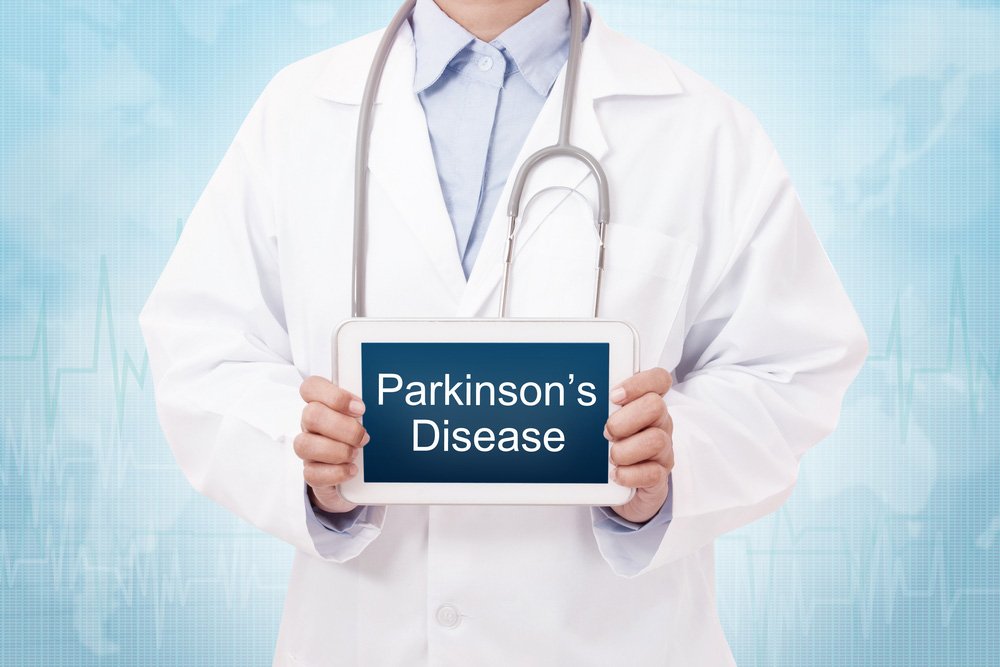
The symptoms of Parkinson’s disease include tremors or trembling ; difficulty maintaining balance and coordination; trouble standing or walking; stiffness; and general slowness.
Over time, a person with Parkinson’s may have trouble smiling, talking, or swallowing. Their faces may appear flat and without expression, but people with Parkinson’s continue to have feelings — even though their faces don’t always show it. Sometimes people with the disease can have trouble with thinking and remembering too.
Because of problems with balance, some people with Parkinson’s fall down a lot, which can result in broken bones. Some people with Parkinson’s may also feel sad or depressed and lose interest in the things they used to do.
The symptoms of Parkinson’s disease appear gradually and get worse over time. But because Parkinson’s disease usually develops slowly, most people who have it can live a long and relatively healthy life.
#9 Consider Deep Brain Stimulation Surgery
- Talk with your doctor about whether you would be a good candidate for Deep Brain Stimulation. DBS is an FDA-approved surgical technique that involves a surgeon implanting a neurostimulator that delivers electrical current to certain parts of the brain. When these targeted areas of the brain are stimulated, it blocks the abnormal nerve signals that cause tremor and other Parkinson’s symptoms. One person with YOPD described his DBS surgery as “a buyback of life” and “daylight savings time on steroids” because he noticed such a difference in his quality of life.
- Watch this panel of DBS experts weigh in on the benefits of DBS.
Treatment Of Young Onset Parkinsons Disease
Young onset patients face unique circumstances regarding medical and surgical treatments of Parkinson’s disease. In general, the same medications used to treat late onset Parkinson’s patients are used for treatment of young onset patients. However, younger patients are at increased risk for certain side effects compared to elderly patients, most notably excess involuntary movements often of the limbs called dyskinesias with use of levodopa. Therefore, a personalized and individualized approach using other medications instead of, or in conjunction with levodopa is often used to mitigate side effects.
Continuing To Work With Parkinsons Disease
A frequent issue that many people with Parkinson’s disease encounter is navigating their continued employment. This is a fraught issue for many and, like most issues affecting people with PD, is highly variable depending on each person’s unique circumstances. There are many aspects to consider:
- Should I tell my employer that I have PD? If so, when?
- Are there ways to lengthen my ability to work despite my PD?
- When is it time to stop working entirely?
- When I reach this point, what are my options for disability payments?
The good news is that many people are able to continue with their work for quite some time after diagnosis if they wish to, and with the right information and support, many people can extend their time in the workforce a fair amount. And when employment is not feasible, there are resources to help navigate the disability process. My goal is that this blog helps you feel more informed and confident so you can make the decisions that feel right for you or your loved one.
Qualify To Get Benefits As Per Reduced Rfc

If your Parkinsonism problem fails to meet the aforementioned guidelines, as mentioned in this list, you may even potentially qualify to get benefits under various medical vocational rules. In order to receive these benefits, you have to prove that your medical condition is severe enough to limit your physical ability significantly to perform basic activities related to work.
A doctor works for the SSA i.e. Social Security Administration will review the medical records, reports associated with symptoms, doctors’ opinions, any consultative examiner and other evidence in the claim file. Later on, doctor will assign you a physical residual functional ability, which is the highest work classification that SSA may feel that an individual can perform.
If a person deals with mental problem because of Parkinsonism, person may receive mental RFC based on psychologist or psychiatrist working on behalf of SSA. SSA will later on, will send a vocational analyst to consider the candidate’s age, education level and previous work experience to determine in case you may return to the work. If not, analyst may decide if such patients may do any other job.
Also Read:
Diagnosing Early Onset Parkinsons Disease
There is no single test to detect Parkinson’s. A diagnosis may be difficult and take a while. The condition is usually diagnosed by a neurologist based on a review of your symptoms and a physical exam.
A DaTscan to visualize your brain’s dopamine system may help confirm diagnosis. Blood tests and other imaging tests, such as an MRI scan, don’t diagnose Parkinson’s. However, they may be used to rule out other conditions.
What Is Canine Parkinsons Disease In Dogs
Canine Parkinson’s disease is defined as a progressive neurological condition that dramatically affects motor function. In the simplest of terms, the nervous system is deteriorating which is causing issues with the patient’s movement.
Progressive means that it gets worse and worse as time goes on.
Whilst you might think it is more common for old dogs to get Parkinson’s disease, the truth is actually different as I will explain later.
Living With A Dog With Parkinsons Disease
Living with a dog with any kind of degenerative disease can be challenging. Your dog is likely very confused about what is going on with their body. A dog with Parkinson’s disease will feel out of control and betrayed by their body almost.
It’s important to be gentle with your dog during this time.
Though Parkinson’s disease is incurable and progressive, there are some things your vet may recommend that will help with your dog’s quality of life for as long as possible.
Parkinsons Affects The Brain And Movement
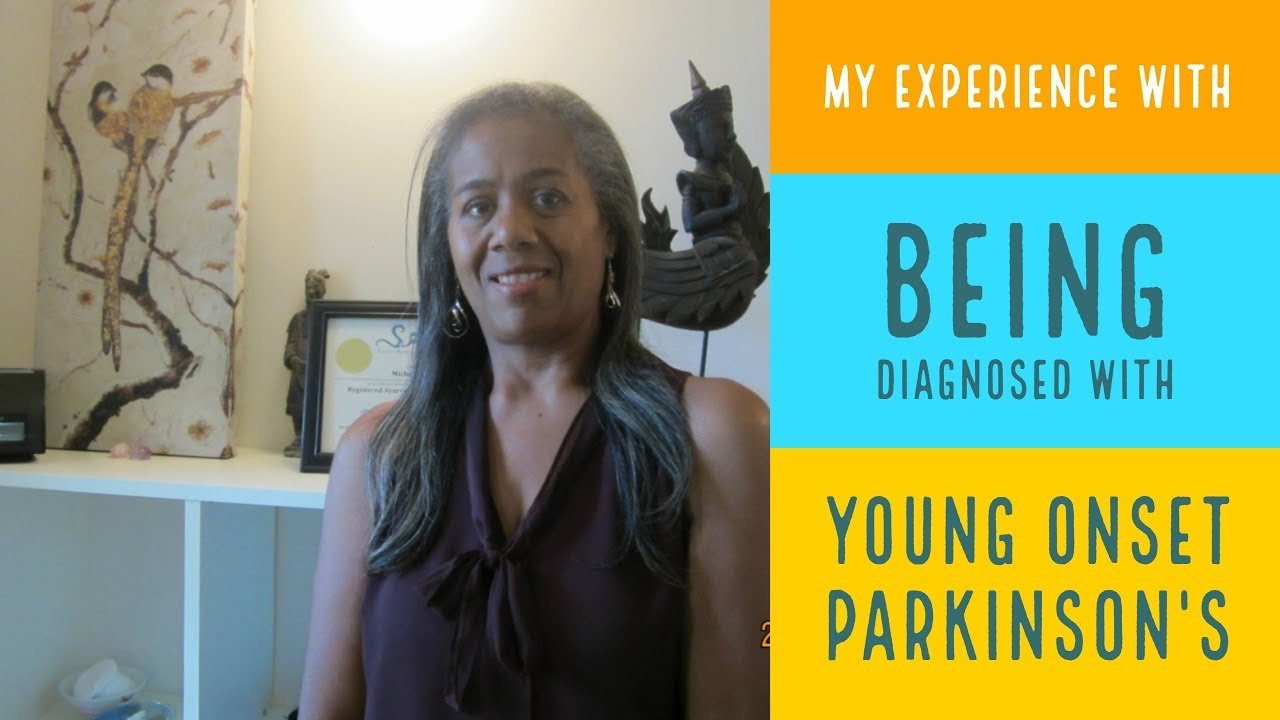
Parkinson’s is a medical condition caused by nerve cells in the brain dying. These nerve cells make a chemical called dopamine, and a lack of dopamine affects normal movement.
People with Parkinson’s move more slowly and stiffly. They may also have a tremor or shake, usually in one arm or hand. Their condition can change from day to day, or even hour to hour.
Sometimes, their muscles stop working altogether and they ‘freeze’ in one position – sometimes just for a few seconds, or at other times, for several minutes.
The shortage of dopamine causes other problems, too. These can include daytime sleepiness, anxiety, depression, poor memory, problems going to the toilet and falls.
Young Onset Parkinsons : An Introduction
Although the average age to develop Parkinson’s is around 60, young onset Parkinson’s occurs in 5-10% of people diagnosed. 20% are under the age of 50. Some challenges in Parkinson’s are universal, regardless of age, but there are a number of issues specific to younger people.
Generally, Parkinson’s proceeds more slowly in younger people. While no two people are the same, someone whose onset age is 40 can expect to work for another 15-20 years on average. For someone with an onset age of 60, the average figure would be half that. These figures are based on the kinds of treatment available today. Future treatment will be even more effective in prolonging the productive life of people with Parkinson’s.
Larry Gifford hosts a panel discussion on Living Well with Young Onset Parkinson’s in May of 2020.
The following characteristics tend to be present in young onset Parkinson’s:
- Young onset Parkinson’s is less likely to lead to dementia and balance problems
- It is more likely to include focal dystonia, which is cramping or abnormal posturing of one part of the body.
- Younger people are more sensitive to the benefits of Parkinson medications, but they tend to experience the dyskinetic side effects of levodopa sooner than older people.
- They also tend to experience dose-related fluctuations at an earlier stage of the disease, including wearing off* and the on-off effect. See Parkinson Canada Information Sheet, Parkinson’s Medications: What you need to know!
Medication
Employment
Causes Of Early Onset Parkinsons Disease
It’s unclear exactly what causes Parkinson’s at any age. Genetic factors, environmental factors, or some combination of the two may play a role. This condition occurs when cells are lost in the part of the brain that produces dopamine. Dopamine is responsible for sending brain signals that control movement.
Certain genes are associated with early onset Parkinson’s.
According to the National Parkinson Foundation, studies show that 65 percent of people with Parkinson’s who experience onset before age 20 may do so because of a genetic mutation. This organization also suggests this mutation affects 32 percent of people who experience onset between age 20 and 30.
Environmental causes of the condition may include exposure to chemical toxins such as certain insecticides, fungicides, and herbicides.
The U.S. Department of Veterans Affairs recognizes Parkinson’s as a disease caused by exposure to Agent Orange. Agent Orange is a synthetic chemical herbicide that was used to spray vegetation and trees during the Vietnam War.
You may have a higher risk of developing Parkinson’s if you:
- are a man
#5 Eat Healthy Meals Throughout The Day
- Consuming a variety of foods from all five food groups provides consistent energy and keeps your immune system healthy. Focus on eating a minimum of five fruits and vegetables each day, eating a variety of high fiber foods, and staying hydrated, all of which help prevent constipation, which is often an issue for people diagnosed with YOPD.
- Watch this to learn how to use nutrition to help you live well with Parkinson’s.
Who Gets Early Onset Parkinsons Disease

About 10%-20% of those diagnosed with Parkinson’s disease are under age 50, and about half of those are diagnosed before age 40. Approximately 60,000 new cases of Parkinson’s are diagnosed each year in the United States, meaning somewhere around 6,000 – 12,000 are young onset patients.
Is it genetic or hereditary?
The cause of Parkinson’s disease is not yet known. However, Parkinson’s disease has appeared across several generations of some families, which could indicate that certain forms of the disease are hereditary or genetic. Many researchers think that Parkinson’s disease may be caused by genetic factors combined with other external factors. The field of genetics is playing an ever greater role in Parkinson’s disease research, and scientists are continually working towards determining the cause or causes of PD.
Parkinsons Affects Everyone Differently
In the UK, around 145,000 people are living with Parkinson’s. Most people who get Parkinson’s are aged 50 or over but younger people can get it too.
As the amount of dopamine in the brain is gradually lost over many years, Parkinson’s will get worse. But the symptoms someone has and how quickly their Parkinson’s develops will be different from one person to the next.
Is There A Cure For Parkinson’s Disease
Although research is ongoing, to date there is no known cure or way to prevent Parkinson’s disease. But, research has made remarkable progress. There is very real hope that the causes, whether genetic or environmental, will be identified and the precise effects of these causes on brain function will be understood. These remarkable achievements give real hope for the future.
Still, even though there is no cure for Parkinson’s disease, by identifying individual symptoms and determining a proper course of treatment, most people with the disease can live enjoyable, fulfilling lives.
Common Signs Of Young Onset Parkinsons
Symptoms of Young Onset Parkinson’s are often different from Parkinson’s that develops later in life. In young onset Parkinson’s the first symptom is often dystonia: involuntary muscle contractions that may cause stiffness, twisting and repetitive motions in the limbs. Leg or foot dystonia is particularly common affecting up to 50 percent of diagnosed young people.
Many of the more common signs of Parkinson’s in the elderly are less common early on in young onset Parkinson’s disease, such as tremors, cognitive problems including memory loss and dementia, and loss of balance and coordination.
